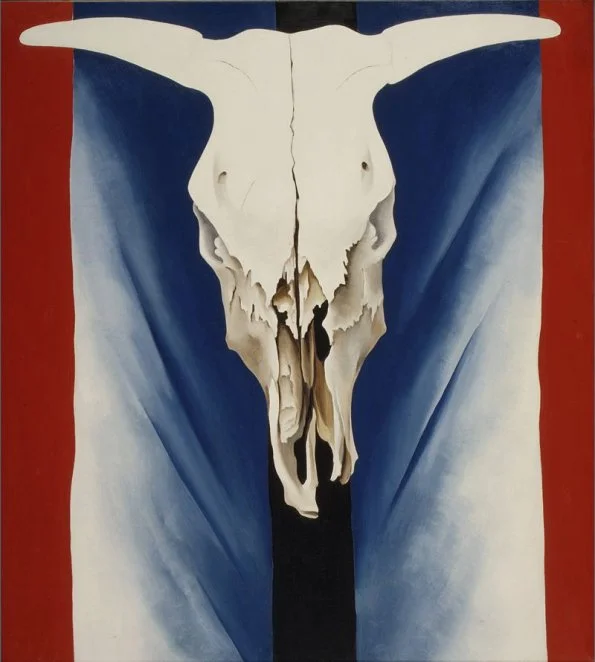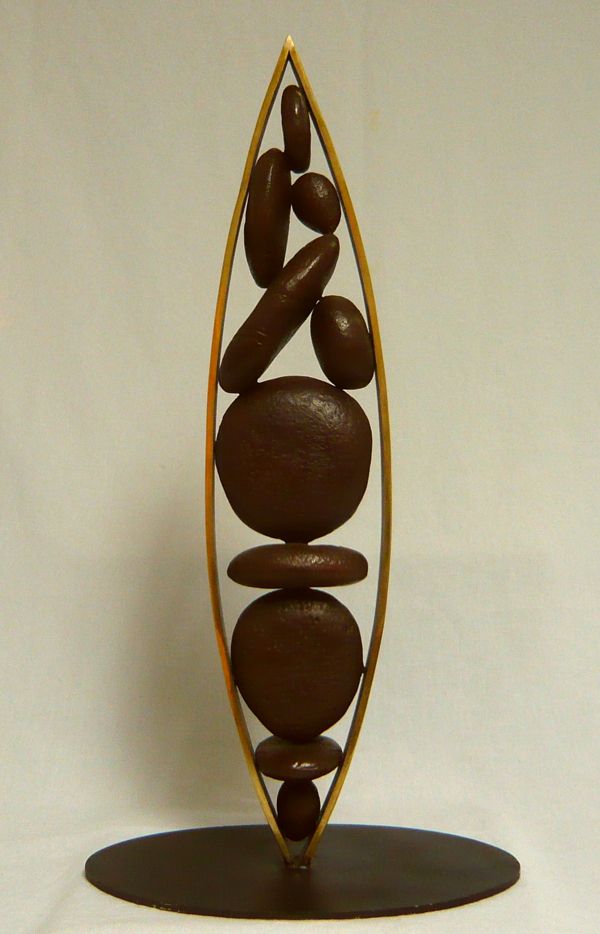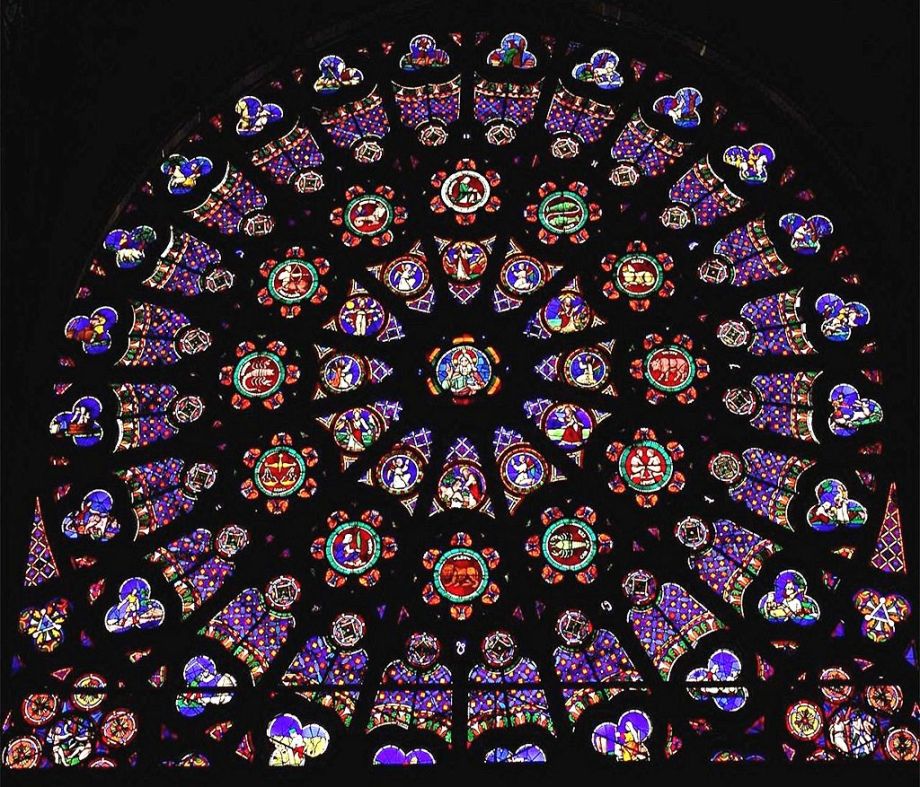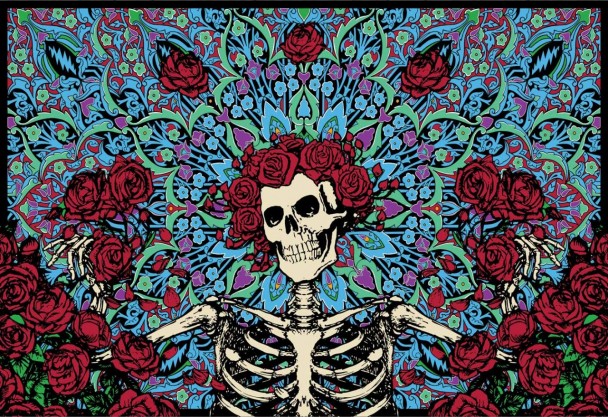Balance is arranging elements so that no one part of a work overpowers, or seems heavier than any other part. Balance, in art, has to do with how big, how many, and where the objects are in a composition. In art, balance has nothing to do with physical weight, but rather is about visual weight (This is true for 2D art for 3D art it can have to do with physical weight and actual balance). If an artwork has more objects or larger objects on one side of the composition, the visual weight is “heavier” on that side of the piece. If the visual weight appears heavier on one side the artwork is usually considered “unbalanced”. The artist’s use of the Elements (if the artist uses an eye-catching texture or a bright color, for example) will make the visual weight appear heavier, as well. The three different kinds of balance are symmetrical, asymmetrical, and radial.
Balance is one of the easier Elements of Composition to see, and you’ll soon discover if you prefer a perfectly balanced or symmetrical composition or an asymmetrical composition. It’s not that one is better than the other, but whichever you choose as the underlying component of your composition has an impact on the overall feeling of the finished work.
Symmetrical
Symmetrical (or formal) balance is the most stable, in a visual sense and has a calmer feeling to it. When both sides of an artwork on either side of the horizontal or vertical axis of the picture plane are exactly (or nearly exactly) the same the work is said to exhibit this type of balance.
Cow’s Skull: Red, White, and Blue , Georgia O’Keeffe, 1931
This painting depicts a cow skull centered in front of what appears to be a cloth background. In the center of the background is a vertical black stripe. On either side of that are two vertical stripes of white laced with blue. At the outside of the painting are two vertical red stripes.
Around the time of the painting’s creation, American artists, musicians, and writers were interested in identifying a uniquely American style and subject matter for their work. They sought out themes for the “Great American Novel” or “Great American Story”. O’Keeffe offered a different opinion about what images could best symbolize America.
In this case, O’Keeffe used a weathered cow’s skull to represent the enduring spirit of America. The cow skull also has strong ties to the American west. It also has visual similarities to Christ hanging on the cross. Which represents America’s strong ties to Christianity. The painting prominently displays the three colors of the American flag behind the cow skull. Although she said made it as a joke on the concept of the “Great American Painting,” the picture has become a quintessential icon of the American West.
I had gone back and forth across the country several times by then, and some of the current ideas about the American scene struck me as pretty ridiculous. To them, the American scene was a dilapidated house with a broken down buckboard out front and a horse that looked like a skeleton. I knew America was very rich, very lush…For goodness’ sake, I thought, the people who talk about the American scene don’t know anything about it. So, in a way, that cow’s skull was my joke on the American scene, and it gave me pleasure to make it in red, white, and blue.”
Pods Vertical, Warren Cullar, Bronze
His Balance Series sculptures are about balance; what each of us strives to achieve – the balance between spiritual, physical and mental. The cast bronze stones are borrowed from nature but made by man. The use of symmetry in this piece gives it a sense of calm and stability. The rock like interior give it ties to nature. The stacked rocks gives this sculpture a further tie to balance in that it appears that the rocks are balancing on one another and yet are contained by the clean lines of the exterior golden metal. This is a visual representation of the delicate balance we all try to achieve in our lives. And how we try to contain and control that balance and protect that balance. Perhaps the clean crisp line of the golden metallic exterior represents our intentional efforts at controlling our spiritual, physical and mental well being and the naturally shaped stones represent our spirit and mind.
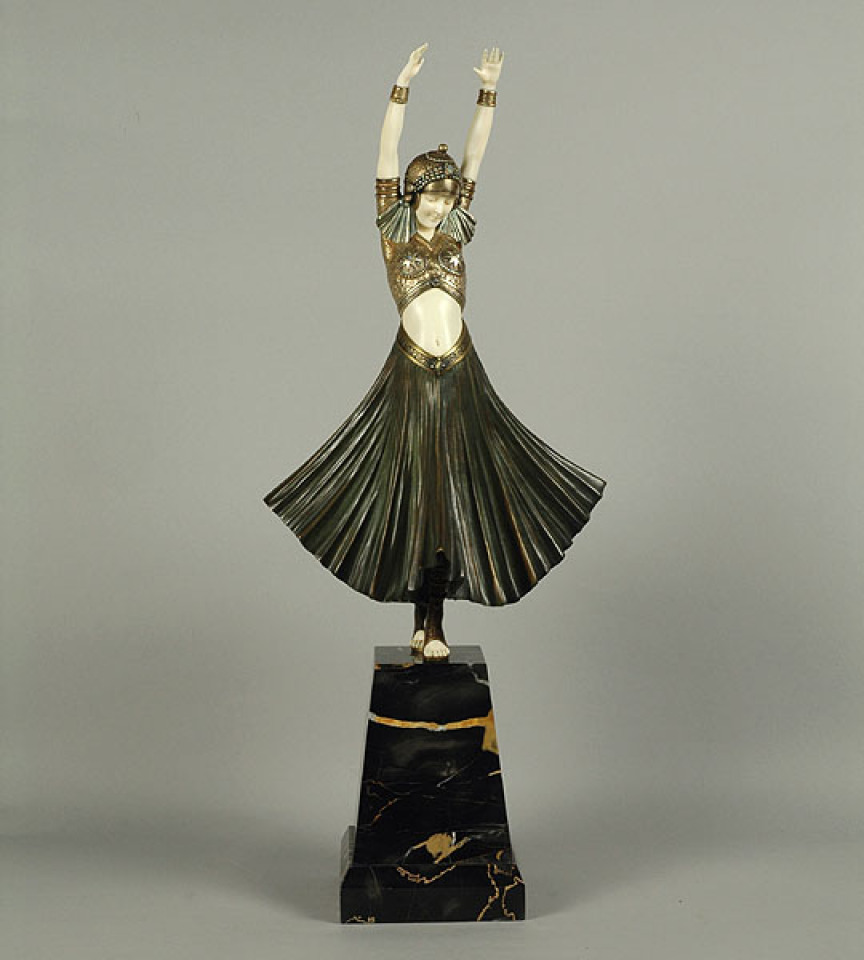 Demetre Chiparus, Hindu Dancer, Bronze and Ivory, 1925
Demetre Chiparus, Hindu Dancer, Bronze and Ivory, 1925
This sculpture is cast and carved as an exotic dancer in pleated green skirt, her arms raised, she wears an elaborate headdress with sandled feet, on a stepped marble base. The sculpture is symmetrical although not perfectly symmetrical.
Sculptures of Dimitri Chiparus represent the classical manifestation of Art Deco style in decorative bronze ivory sculpture. Demetre Chiparus was heavily influenced by Ancient Egyptian art, and French theatre. His more notable subjects and were typified by figures with a long, slender, stylized appearance. Some of his sculptures were directly inspired by Russian dancers.
After the tomb of Tutankhamun was discovered in 1922, the art of ancient Egypt and the East came to French fashion and is also reflected in the creative activity of Dimitri. Coming from the oldest French tradition of high-quality and extra-artistic decorative arts, the sculptures of Dimitri combine elegance and luxury, embodying the spirit of the Art Deco epoch.
Radial Balance (a specific and common type of symmetrical balance)
Radial balance is any type of balance based on a circle with its design extending from center. A star, the iris around each pupil of your eyes, a wheel with spokes, and a daisy (among many flowers and other plant forms) are examples of radial balance.
The north rose of the Abbey of St Denis, Paris, showing God the Creator, surrounded by the Days of Creation, the Order of the Heavens represented by the Zodiac and the Order of Earth as represented by the Labours of the Months. In the corners are the Fall of Mankind.
Pigment was painted on to achieve specific colors and effects (such as shadowing and highlighting). Lettering was created by covering the surface with an opaque pigment, and then writing the letters (etching) in the pigment with the handle of a brush. Once the glass was painted, the pigment was then fused to the glass by firing the glass in a kiln.
Another example of radial balance that we are probably all familiar with.
Asymmetrical Balance
Asymmetrical balance (or informal balance) often has more variety, visual interest, and liveliness. Asymmetrical balance can be achieved by using some of the following principles:
Visually–
- a large form is heavier than a smaller form
- dark values are heavier than light values
- a textured form is heavier than a smooth form
- a complex form is heavier than a simple form
- two or more smaller forms balance one large form
- a smaller darker form balances a larger lighter form
- objects toward the edge or corner of the composition appear heavier
- intense colors are heavier than muted colors
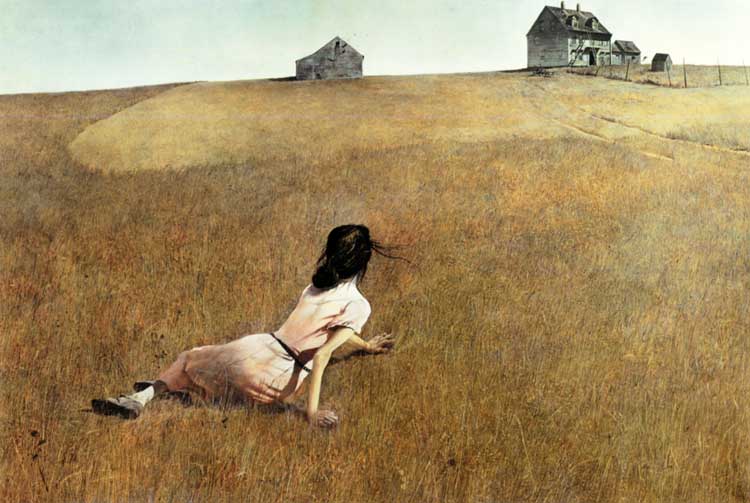 Andrew Wyeth, Christina’s World, 1948
Andrew Wyeth, Christina’s World, 1948
Christina’s World is a painting by American painter Andrew Wyeth, and one of the best-known American paintings of the middle 20th century. It depicts a woman lying on the ground in a treeless, mostly tawny field, looking up at a gray house on the horizon; a barn and various other small outbuildings are adjacent to the house.
The woman in the painting is Anna Christina Olson. She is known to have suffered from polio, a muscular deterioration that paralyzed her lower body. Wyeth was inspired to create the painting when he saw her crawling across a field while he was watching from a window in the house. Wyeth had a summer home in the area and was on friendly terms with Olson, using her and her younger brother as the subjects of paintings from 1940 to 1968.
Is she hurt? Is she abandoned? Does she need help? The seemingly distant farmhouse, her helpless stance, might cause a slight anxiety and unease when one looks at it. But when you consider Wyeth’s intention while painting this picture, it becomes a beacon of hope and positively at once.
Wyeth said of this painting…
“The challenge to me was to do justice to her extraordinary conquest of a life which most people would consider hopeless.”
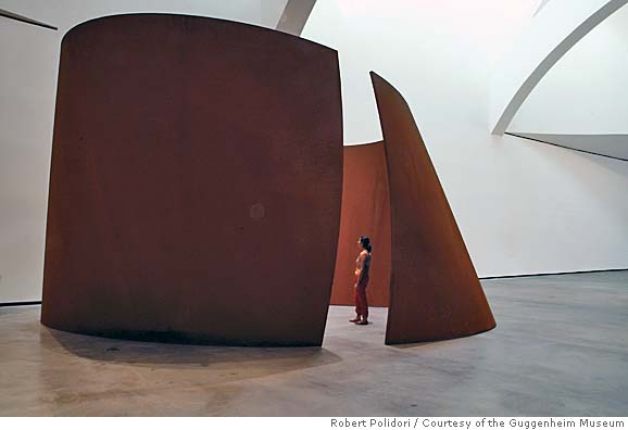 Richard Serra, TTI London (2007), weatherproof steel, installation view
Richard Serra, TTI London (2007), weatherproof steel, installation view
This piece is asymmetrical. The opening is off skew and all angles of the walls are leaning to one side. This helps to create visual interest and less stability in the piece. People who enter the sculpture report feeling as if the walls are going to fall in on them.
For over 40 years, American artist Richard Serra has tested the limits and possibilities of sculpture, film and drawing. In the 1960s he began his investigation into the imaginative and physical potential of materials and their relationship with the site and viewer. Since the early 1970s Serra has become best-known for the monumental sculptures he has created for various architectural, urban and landscape settings.
A child will respond immediately, with shock, awe and delight, to what Serra is doing. They look a little like giant, ferociously dangerous, vertigo-inducing, splayed-lipped cauldrons.
Walk inside – yes, much of the pleasure resides in the fact that you can enter Serra’s works and wander at your will – and you see that these vast, soaring, enclosing walls of steel are leaving oval shapes on the ground.
But how exactly – in what particular direction – are they listing and leaning? The fact is that we are never quite sure, because our perception of these shapes seems to change as we walk around and through them.
Crystallographic balance, or an allover pattern, is created by repeating elements of equal weight everywhere. Emphasis is uniform; there is no distinct focal point. Quilts and chessboards are examples of crystallographic balance.
Literal Balance
Some art has to do with Literal Balance. The videos below help to illustrate how artists use literal balance in their work. This is only possible in 3D works.
